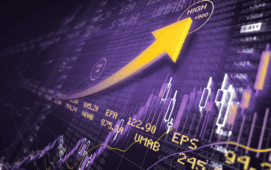
By John Greenan, CEO, Alignment Systems
Over the past 30 years, the buy-side trading desk has undergone a fundamental transformation, specifically in two linked areas: automation of high-touch and low-touch trading, and the rise of multi-asset class trading. Alignment Systems worked with FactSet to document this transformation with an eye on understanding where the industry is heading. In querying long-only institutional asset management firms for insight into the evolution of the buy-side trading desk, Alignment Systems offers a handful of predictions for the future. The resulting research reviews the history of electronic trading, specifically around:
- How the widespread use of FIX propelled the industry forward, setting the stage for the development and adoption of the order management system (OMS) and execution management system (EMS)
- The industry’s move from asset class silos to desks specialising in high- and low-touch trading and sourcing liquidity
- How increased usage of cognitive computing, including machine learning techniques and artificial intelligence, drive the need for retention and on-demand access to large quantities of data and analytics
- The evolution of electronic trading workflows and the future of OMS and EMS.
FIX Propelled the Industry Forward
There was a time when FIX was new and untrusted, and in many cases, traders would send an order electronically and then follow up with a phone call to check the message had arrived. However, as the use of the OMS increased, the uptake of FIX began to drive the industry forward. As such, the modern OMS was born once the buy-side could interact electronically with the sell-side in real time, witnessing executions being returned at the same speed. This also formed the basis for the EMS.
In many cases, the buy-side OMS grew out of a compliance monitoring system and/or a portfolio management system. The EMS grew from the market side of the trade back into the buy-side. Initial EMS platforms had real-time data integration, charting, real-time analytics and other tools that were familiar to users who had experience with sell-side trading technology. The OMS has often been multi-asset from the start, as it needed to show valued positions for portfolios and had to be able to handle all of the assets held by an asset management firm.
The equity-only EMS provided the enhancements that sophisticated buy-side dealing desks demanded to help them interact more smoothly with markets. Over time, client demand has pushed the EMS into exchange trade derivatives, foreign exchange, over-the-counter derivatives and, most recently, fixed income.
The Rise of the Multi-Asset Trading Desk
In many cases, for firms that manage money in multiple asset classes, structural changes have been drivers of change when it comes to the interaction between the firm and the market. The move from asset class-based silos to multi-asset integration has required an investment in trading technology and personnel. The increase in skills needed to trade multiple asset classes should not be underestimated. With the right technology in place, however, talent management no longer needs to be a challenge.
Many buy-side firms with a centralised dealing desk have a number of low-touch orders to which traders cannot add value. These may include dealing in unitised funds and small-sized orders that can be filled at- or near-touch. Once identified, these orders should be sent for automated execution and passed downstream to settlement functions. The opposite is high-touch orders, such as trading a position in an illiquid equity where the order is 20x ADV, or an order to sell a corporate bond that has not traded in several months and where there is no RFQ-based liquidity.
The Evolution of Order Routing Across Asset Classes
Order routing across asset classes has evolved, enabled by advancing technology. The evolution has followed this path:
- Generation zero: all orders routed to an asset-class specific desk
- Generation one: simple rules based on static data
- Generation two: more complex rules based on real-time data
- Generation three: more complex rules based on historical analysis
- Generation four: machine learning rules.
With the range of big-name, vendor-supplied OMS products available, the buy-side has access to generations zero, one, and two. Many buy-side teams are building generation three, which is merely a stepping stone to generation four. Machine learning is a complex topic and a work in progress for most firms that are implementing the technology.
Future Trends
Based on market observations, technology trends, and interviews with experienced market participants, Alignment Systems offers the following predictions for the future of trading:
- The use of technology to analyse real-time and slow-time data to provide insights for trading desks will increase
- The proliferation of trading venues will continue
- The buy-side traders that will flourish will be those who are comfortable with technology-driven solutions and are able to adapt and change as the market structure changes
- Buy-side technology will continue to become more sophisticated; the foundations for machine learning are being laid at the moment and require high-quality data as a prerequisite.
To read more about the transformation of the buy-side trading desk and future predictions, download our eBook: The Evolution of the Multi-Asset Class Trading Desk
Subscribe to our newsletter




